-
Posts
1,781 -
Joined
-
Last visited
-
Days Won
8
Content Type
Profiles
Forums
Blogs
Gallery
Events
Store
Posts posted by azyeoman
-
-
Thank you for updating us on this. I apprecaite it. A sad but well deserved award.
0 -
I don't have one of these cards in my collection, but as you can see, some of the Japanese surrender swords that were presented to British officers were accompanied by one of these cards in an envelope. I understand that the British sent all the swords to one warehouse and it was from there that they were selected.
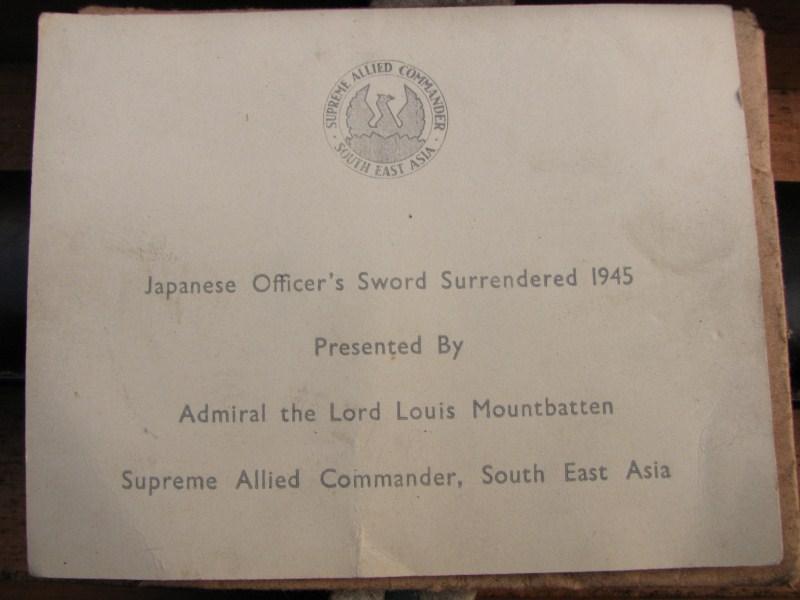
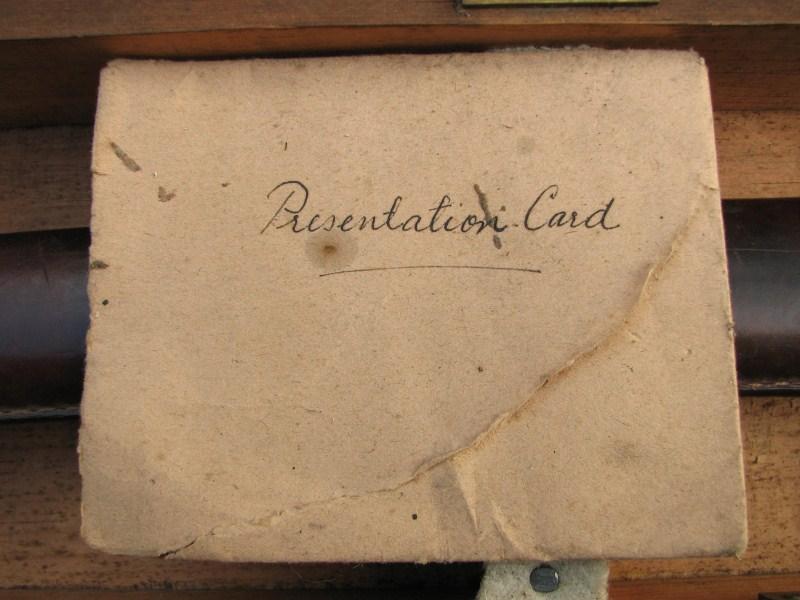 0
0 -
Now for my all time best piece in my collection. An officer's wakizashi. If anyone can translate the Japanese, I will be eternally grateful. What a Japanese friend of mine said was that part of it translates as: "Presented by Army HQ" Then the other side has the name of a Chinese City in Manchuria and the Showa date, 18 Novermber 1934. There is the name Sojurou on it too and my friend said it is an old-fashoned name.
The sword itself was made by Hibano Kin Mich.
This too was a Mountbatton present and to a Colonel W. Fairley whose service details are below. As for the Japanese officer whose sword Fairley was given, I don't know anything and any help would be very welcome.
The Army List gives the following cumulative entry for Colonel Fairley and he appeared in the Gradation list of the British Army, Army List, January 1945, p. 365.
William Melrose Fairly, OBE. Born 11/5/1892; temp 2nd Lt 1/8/1917 to 11/1/1919; Army 2nd Lt 1/5/1918; IA 2nd Lt 12/1/1919; Capt (Prov) 24/4/23; to 31/8/25; Capt 19/10/1925; Maj 24/4/36; Acting Lt Col 22/9/40; to 21/12/40; temp :Lt Col 22/12/40 to 23/4/44; Lt Col 24/4/44.
The next available list dates from 1947 and Fairly did not appear there or later. IA is Indian Army
From this, we know that he'd have had at least a medal bar consisting of at the very least an: OBE, BWM, Victory, '39 Star, Pacific Star, Defence Medal and War Medal.
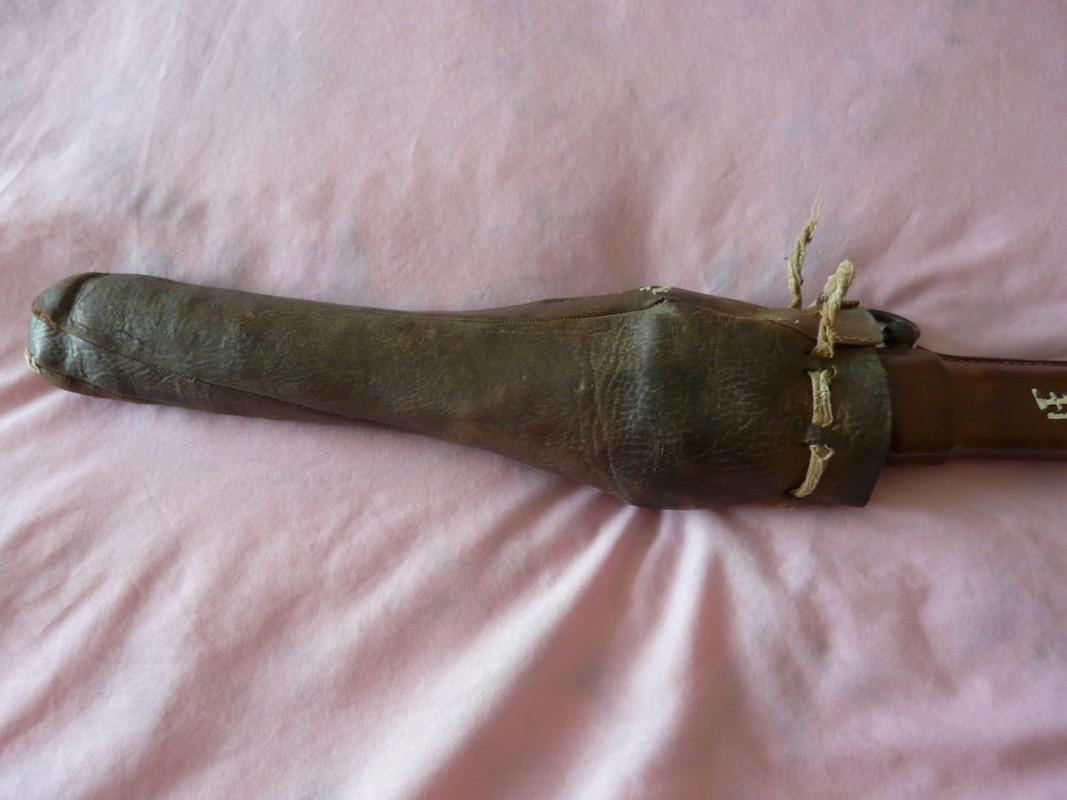
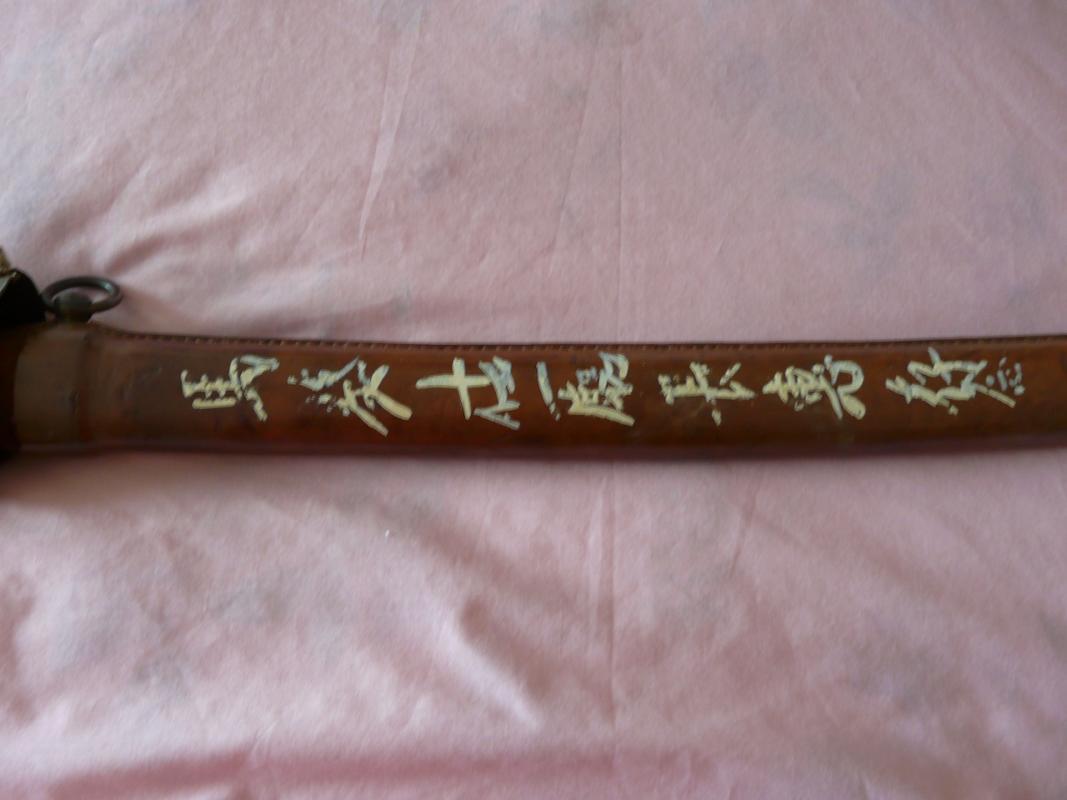

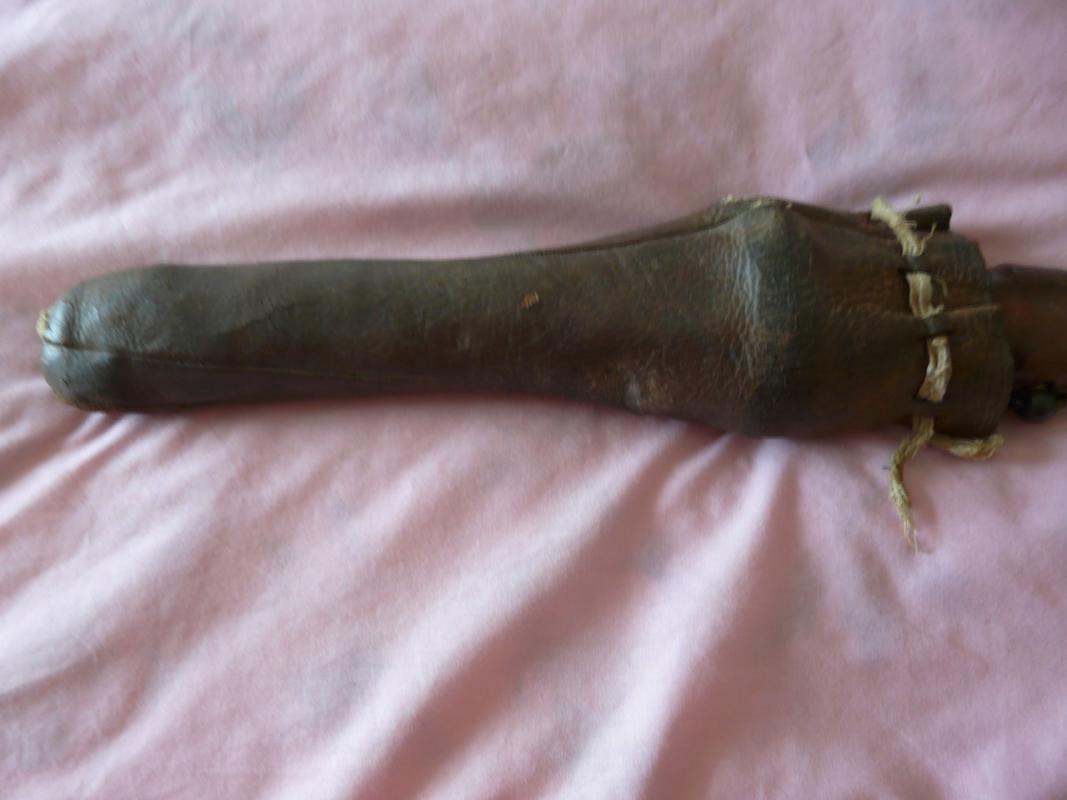

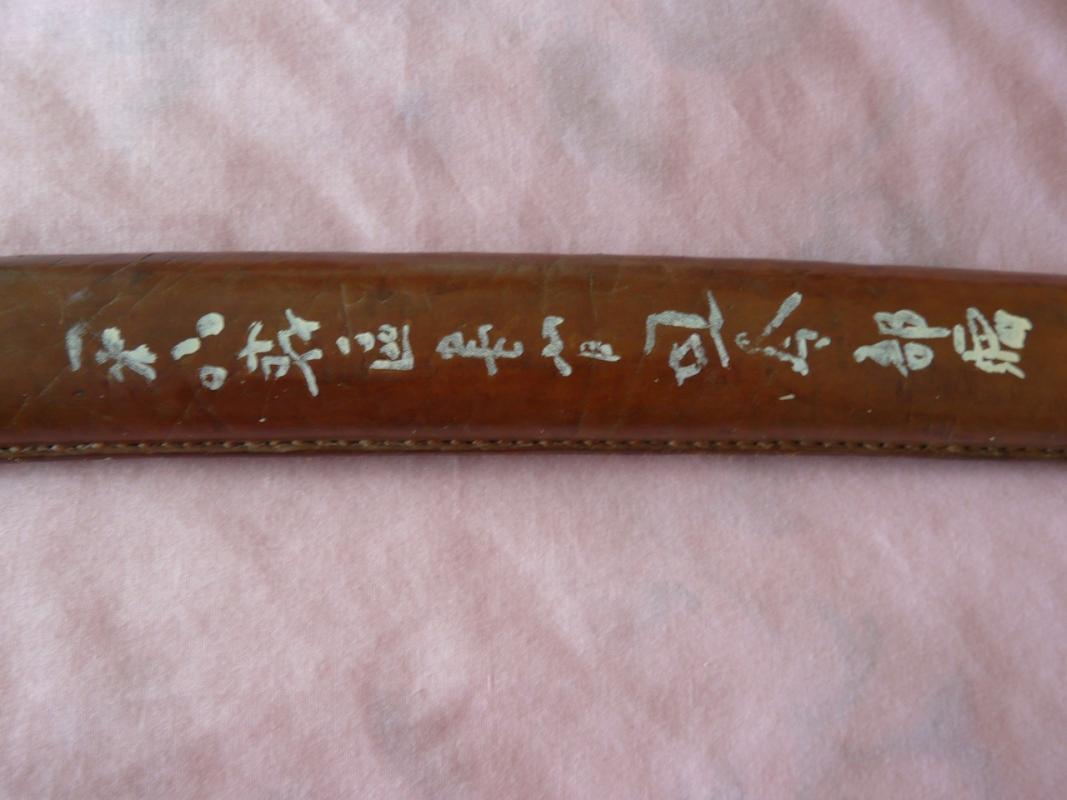
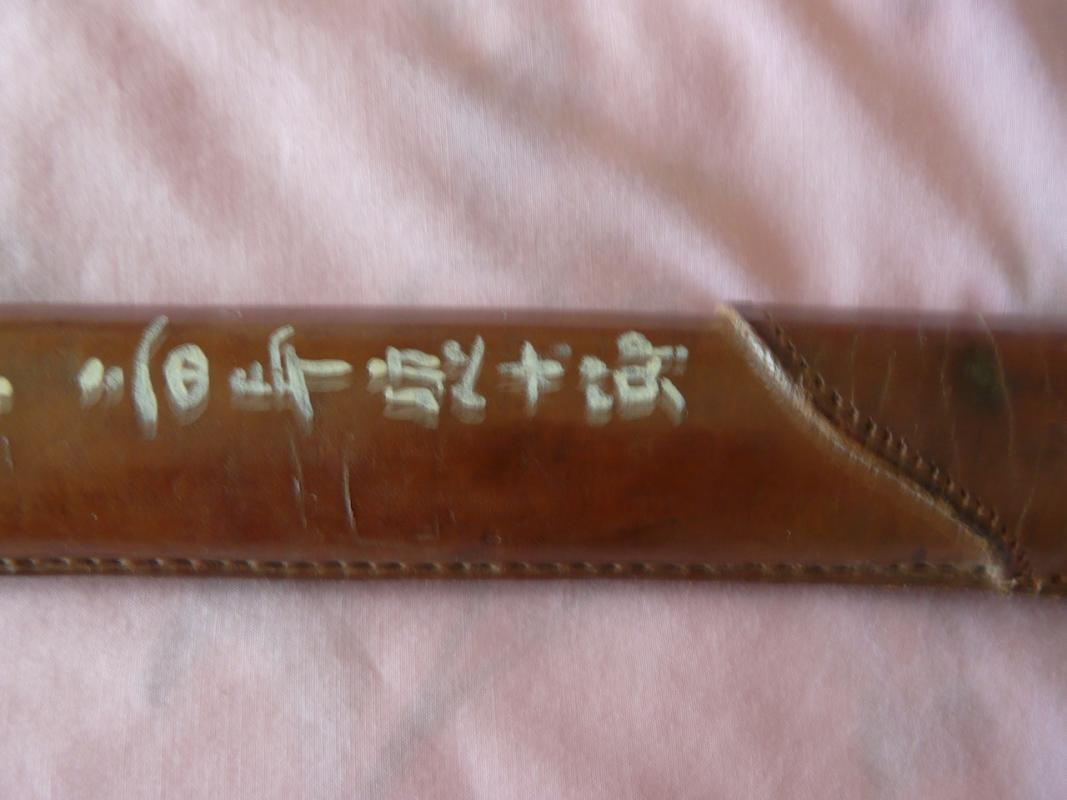
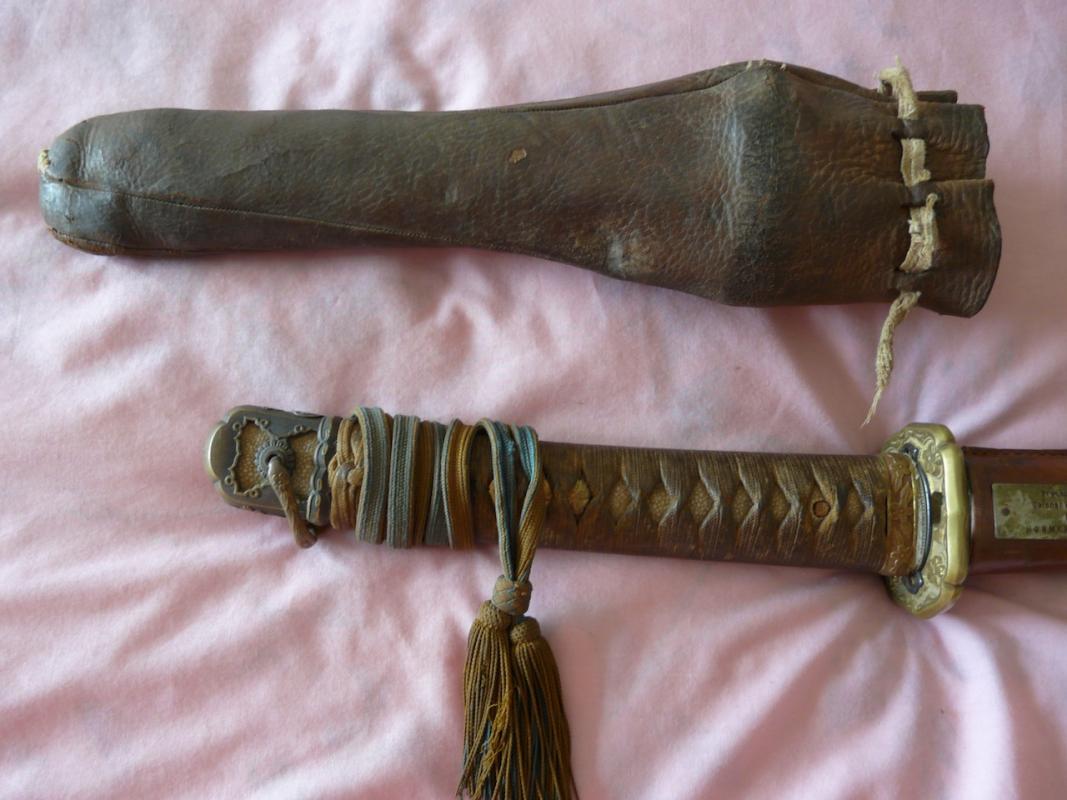
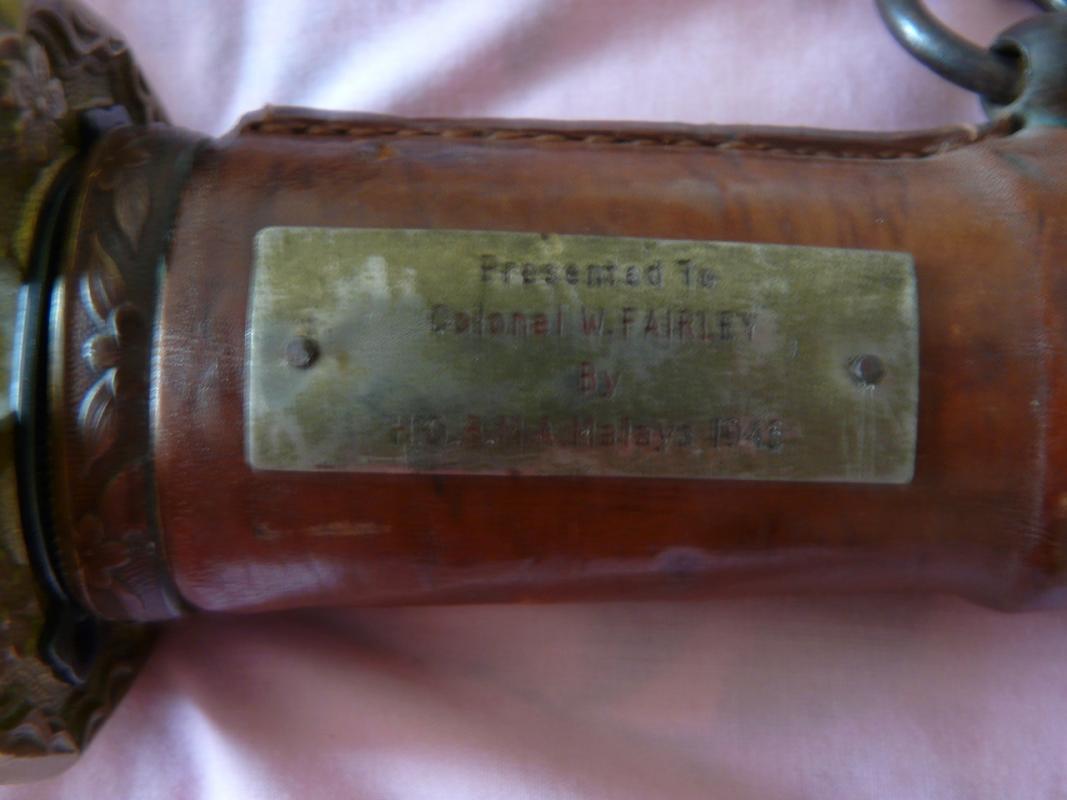

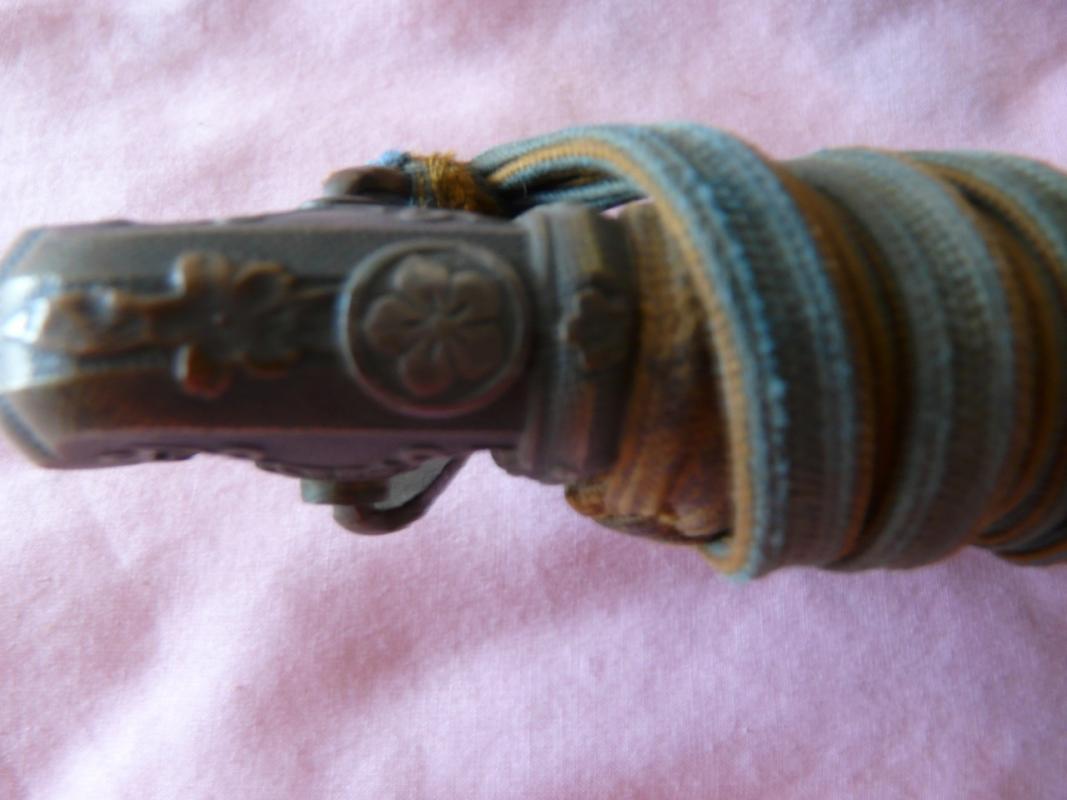 0
0 -
An NCO wakizashi with matching numbers and best of all an attached presentation plaque. "Presented To / Captain R. P. Allison / By / H.Q.B.M.A. Malaya 1945"
As I understand, these were given as presents to officers on Mountbatton's staff, usually to captains and above. Apparently, officers were allowed to bring them back, but NCOs and other rankers had to pay a pound and so many of them threw them overboard when the ship was docking in Great Britain as that was a fair amount then!!! The man from whom I got the officer's sword below, was an avid collector and between him and another collector, they had seen thousands of swords, but only about 25 with plaques. In my research, I've only come across one other that was in Australia. I've seen a cased sword with a printed letter and signed letter from Mountbatton for another officer's wakizashi.

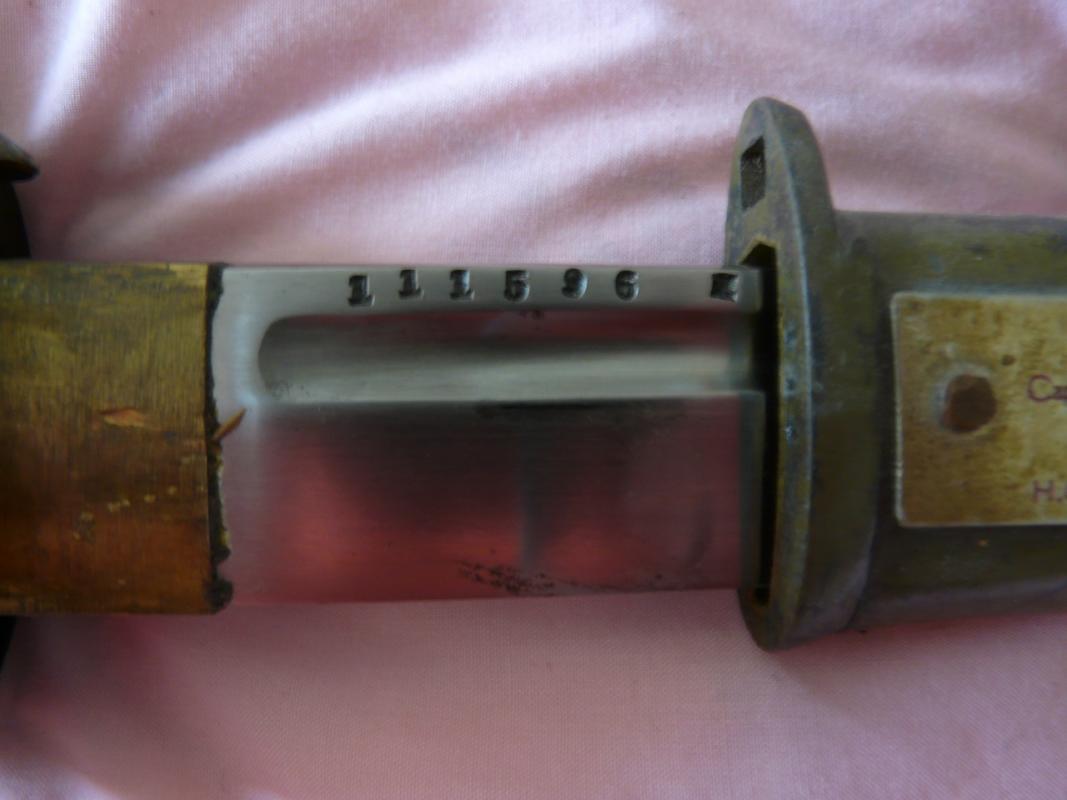
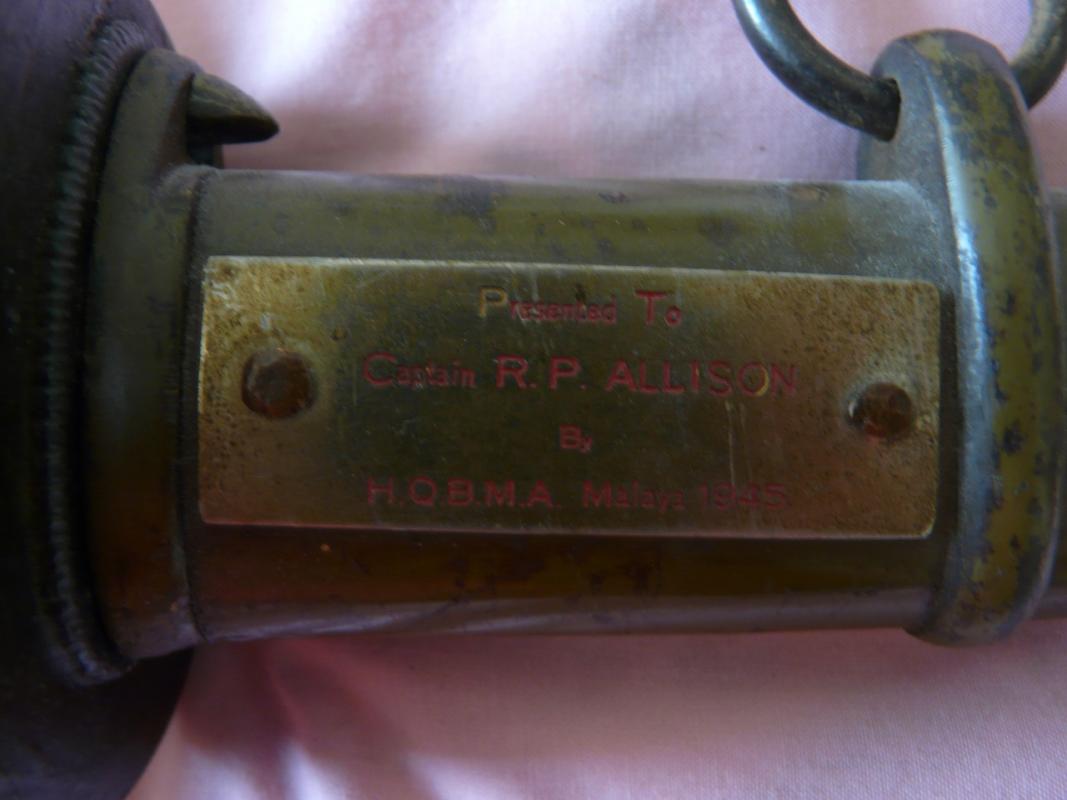 0
0 -
Sgt. Harry Hawthorne, 5Bn. KOSB was a PoW in Stalag XiB and in Stalag 357. He wrote down his experiences for the BBC as follows.
Thousands of men, who had been trained to kill other men; to blow up bridges; to parachute from aeroplanes and jump out of gliders; suddenly found themselves in a strange type of society - a society without women and without money. We had no training which would prepare us for this kind of living.
But, some kind of organisation was needed, if thousands of men were to live in overcrowded conditions, and overcome the hardships of cold and poor food and general lack of amenities. I appreciated that the maintenance of morale was essential, if my men and I were to survive our period in captivity, and be fit to celebrate our eventual release and return to freedom.
I admit that there was not much incentive to jump out of your bunk in the morning to face another monotonous day. In Stalag XI B, the daily routine was as follows - rise and wash at 0700 hours; drag oneself up to the cook house for a mug of Ersatz coffee; parade for Roll Call at 0730 hours; clean bed area; exercise period 0800 hours to 0930 hours - when thousands of POWs performed the "Stalag Shuffle". Going round and round in a circle, with only the sight of the head and shoulders of the man in front of you as the view. Sometimes, I felt the urge to walk the other way and face the circle of men for a change. But I do not think that I ever did.
At 1100 hours there was an issue of Turnip Soup, sometimes with the addition of potato peelings. Another Roll Call at 1300 hours. More Ersatz coffee at 1330 hours. A more substantial meal was prepared from the contents of Red Cross parcels by
ourselves at about 1500 hours, and then the final Roll Call of the day at 1600 hours.The Germans were obsessed by numbers, and the need to count and recount their captives. Sometimes, it was amusing to witness the difficulties they had in reconciling the numbers at each count, but of course the humour was tempered by the long wait on the cold parade ground. At around 1700 hours, we would make some form of tea meal, and if supplies allowed a light supper about 1930 hours.
Cleanliness was essential to the maintenance of morale. It was not easy with limited washing facilities, but I very much admired one Corporal, who, no matter the circumstances, turned out very smart every day. "Out of a bandbox", I commented.
But man does not live by bread alone. It was essential to keep one's brain active. This was done by talks, spelling quizzes and other stimulants to combat the lethargy to which one could easily succumb. My contribution to help overcome boredom was to give talks on the Red Army-"From Trotsky to Timoshenko". These talks were well received, even when the lighting in the huts failed.
When I later arrived at Stalag 357, this was a well organised camp from the P.O.W. viewpoint. There must have been quite a few long term prisoners, for various activities had been solidly established by then, before my comrades and I arrived.
I recall attending a meeting of the Toc H organisation in the camp, but the place which gave me the most delight was the Library. At first I could not believe my eyes, when I first saw shelf after shelf of books arranged in their respective categories. I used its facilities right away! I still have in front of me a piece of paper which shows that on Wednesday, 7th.March, 1945, I withdrew from the library a book called "The Meaning of Rousseau" by an author called Wright. The method of using the Library was as follows - one removed a book from the shelves, and put the form on the shelf in place of the book. When you replaced the book, the form was destroyed. I must have held on to this particular one, which is numbered 320.
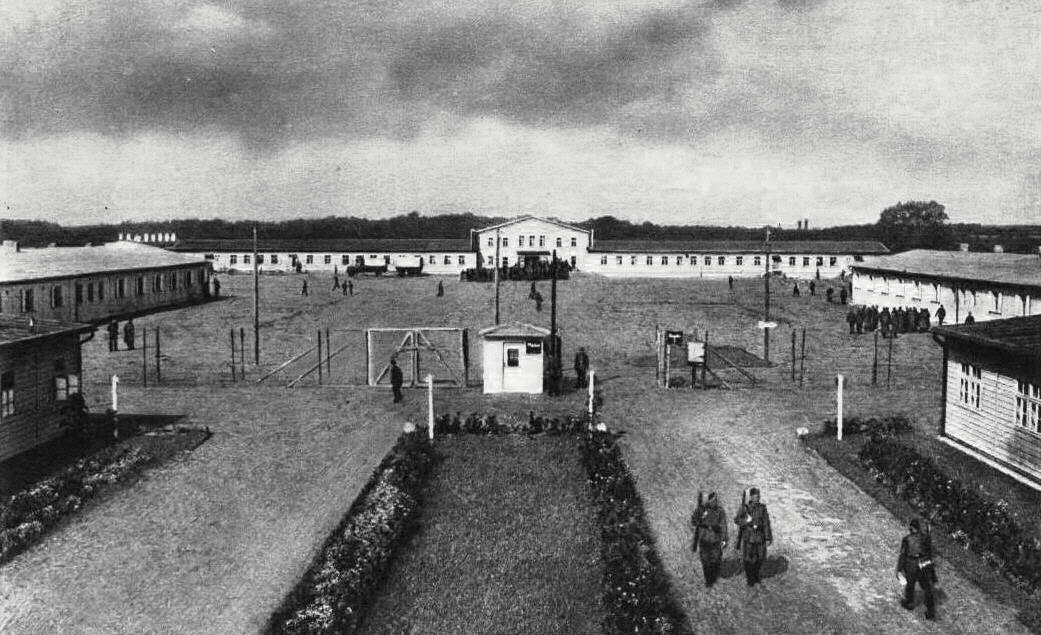
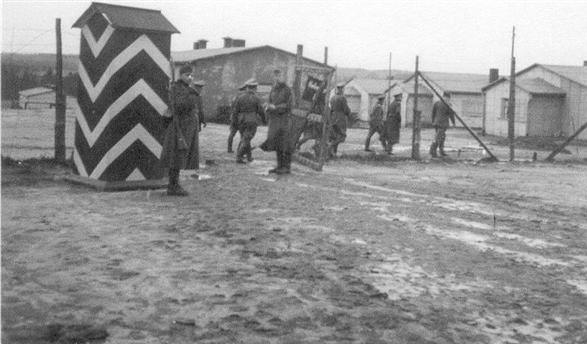
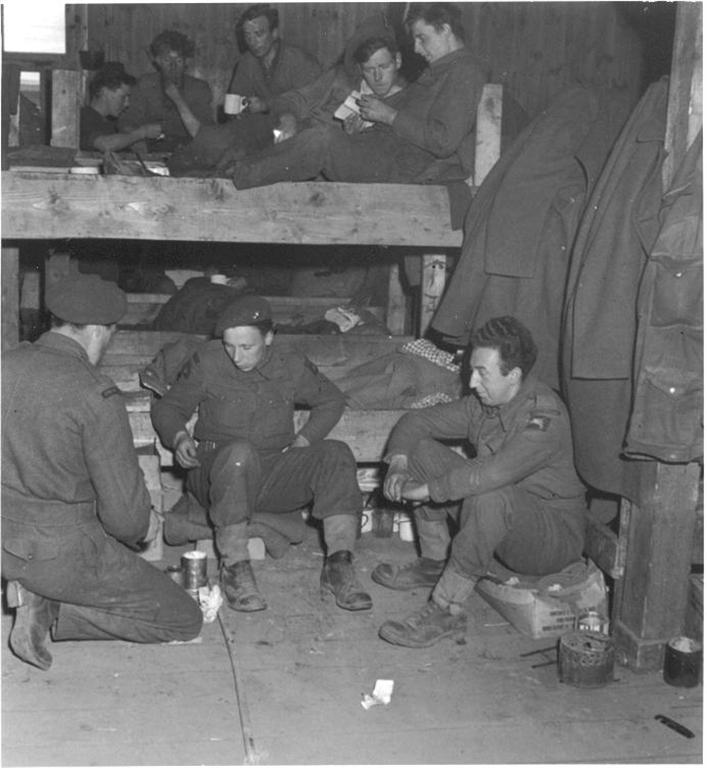 0
0 -
Campo 73 (right to left) As British PoW Camp in 1942, camp map and the entrance to today's museum. Campo 73 or Fossoli de Carpi, was also a concentration camp.
FOSSOLI, internment camp for British prisoners of war in the village of Fossoli, on the outskirts of the town of Carpi, in the province of Modena (Emilia), created by the Italian army in 1942. Opening in July, the camp consisted primarily of tents housing 1,800 British internees and 350 Italian guards under the command of Col. Giuseppe Ferraresi. In September a second section was opened and work began to substitute the tents with barracks. Living conditions for the prisoners were in accordance with international law, and representatives of the Red Cross visited regularly. By the summer of 1943, the two sections of the camp held about 4,000 prisoners.
After the Italian armistice with the Allies announced on September 8, 1943, the Germans began their long-planned occupation of Italy. Fossoli was under German control by the 9th. All Allied prisoners were deported to German camps, primarily Bergen-Belsen, during the second half of September.
At the end of November 1943, police order number 5 of the Ministry of the Interior of the Italian Social Republic announced that all properties of Jews were to be confiscated and that the Jews themselves should be arrested and detained. On December 5, the second section of the Fossoli camp was designated for Jewish prisoners and placed under the authority of the prefect of Modena, Bruno Calzolari. Within a few weeks, almost 1,000 Jews were detained in the camp. On March 15, the Germans officially took over the second section, which they had unofficially occupied since February, and placed it under the authority of the Befehlshaber der Sipo-SD, Wilhelm Harster, who resided in Verona. The second section then became a Polizei- und Durchgangslager controlled directly by the German SS and used as a base for the deportation of Jews and political prisoners to the East. The Italians continued to control the other section of the camp, where prisoners not destined for deportation were held. SS Untersturmfuehrer Karl Titho, aided by SS Hauptscharfueher Hans Haage, were awarded the direct command of the German section of Fossoli. Under them was a small group of SS, some Ukrainian volunteers, and some Italians from the Social Republic. Italians arrested for political or racial reasons, mainly in the northwestern region of the country, were sent to Fossoli. Deportations began on February 19, 1944, and ended on August 1 of that year, when the advancing Allies forced the Germans to retreat farther north. At that point, the Germans established their camp for political and racial prisoners at Bolzano-Gries. Altogether, about 5,000 prisoners were deported from Fossoli, of whom 2,461 were Jews.
Between autumn 1945 and the second half of the 1960s, Fossoli hosted various kinds of refugees: foreigners residing temporarily in Italy in the first postwar years as well as, after 1952, Italians fleeing from Dalmatia, controlled by Tito. The camp was then abandoned for several years. In 1973, the mayor of Carpi asked the Italian government for authority to turn Fossoli into a site of special remembrance. This was done in 1984. In 1996, a cultural foundation at the former camp was created for the purpose of educating new generations and nurturing the memory of the suffering that had occurred there. A study center dedicated to the memory of Primo *Levi, the great Italian Jewish writer who was deported to Auschwitz from the camp on February 22, 1944, was also created there.
BIBLIOGRAPHY:M. Sarfatti, Gli Ebrei nell Italia fascista: Vicende, identità, persecuzione (2001); C.S. Capogreco, I Campi del Duce. (2004).
[Guri Schwarz (2nd ed.)]


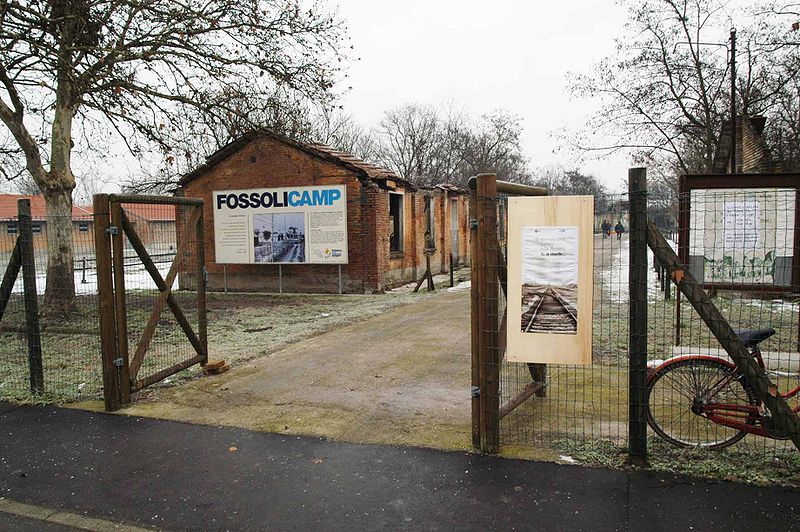 0
0 -
A Tobruk PoW Group
1939-45 Star, Africa Star; War Medal; E.M. 'Territorial' (G.VI.R. 1st type) (Bdr., R.A.) and RA cap badge and pair of collar insignia.
With copies of the PoW rolls confirming that 921515 Sgt. F.J. Beard was PoW no. 138691 at Campo 73 in Italy and at Stalag 357 (Fallingbostel) in Germany. For more info on Stalag 357 go to:http://www.fallingbostelmilitarymuseum.de/stalag/stalag.htm
With a copy of his PoW papers - Frank Joseph Beard was born on 1/5/14 at Ipswich, Suffolk; where he was a packer in an engineering works and lived at 169 Woodville Road, Ipswich.
He enlisted on 22/5/1939 and served in North Africa with the 67th (Suffolk) Medium Regt. R.A. (T.A.) and was taken prisoner at Tobruk on 21/6/42. He was held at Benghazi until November 1942 when he was moved to Italy. While in Italy he was held at several PoW camps: Campo 68 at Vetralla (Dec 1942 to Jan 1943); Campo 73 at Carpi http://en.wikipedia.org/wiki/Fossoli_di_Carpi (Jan 1943 to Mar 1943) and Campo 53 at Macerata (Mar 1943 to May 1943). He was Camp Leader at a Work Camp at Cona, near Padora, from May to Sep 1943. After being moved to Germany he was held at Stalag 9a at Altengrabow (Nov 1943 to Mar 1944) http://www.memorialmuseums.org/eng/staettens/view/9/Gedenkstätte-und-Museum-Trutzhain; at Stalag 357 at Thorn, Poland (Apr 1944 to Aug 1944); and at Fallingbostel near Hanover (Aug 1944 to Apr 1945). He was not seriously ill during his captivity and signed his PoW report on 4/5/45. Beard most certainly was on the "Long March".For more information and to see an exceptionally interesting German photograph album of Stalag IXA, go to: http://www.indianamilitary.org/German%20PW%20Camps/Prisoner%20of%20War/PW%20Camps/Stalag%20IX-A%20Ziegenhain/Photos/Stalag%20IX-A.htm
He died at Ipswich in December 1999.
The 67th Medium Regt. RA TA was unfortunate to have been on board the SS Scillion that was torpedoed on the way to Italy from north Africa in 1942. On November 13th, 1942, at Tripoli, 814 Allied PoWs were ordered into the Italian SCILLIN's cargo hold, which was only suitable for around 300. The result was severe overcrowding and insanitary conditions. More prisoners would have been loaded, but the British military doctor (Capt. Gilbert, RAMC) made vehement and repeated protests. Some reports state that a further 195 PoWs were disembarked before Scillin sailed and that there were some 200 Italian troops on board; others dispute these points saying that the only Italian troops on board were guards and gun crews and the surplus PoWs were never actually boarded.
On the night of 14 November off the Tunisian coast SCILLIN was ordered to stop with gunfire by the British submarine HMS SAHIB. She did not respond, so her captain decided to torpedo SCILLIN. Those in the hold had little chance of survival as the torpedo had hit the hold itself and the ship sank rapidly. SAHIB was able to rescue 27 POWs (26 British and one South African), the SCILLIN's captain and 45 Italian crew members, before the arrival of an Italian warship obliged her to leave. Only when survivors were heard speaking English, did SAHIB's captain realize that the SCILLIN was carrying POWs. For more on the SCILLIN go to: http://en.wikipedia.org/wiki/SS_Scillin
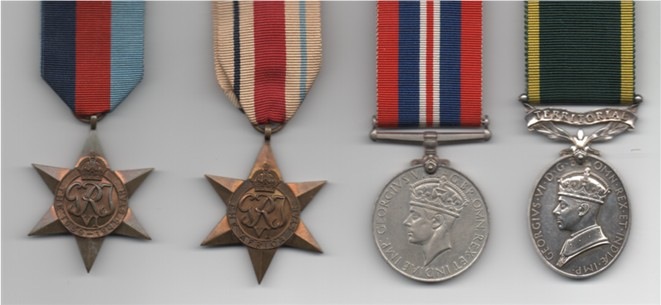 0
0 -
Another nice Godet frack to an officer with a fabric label.
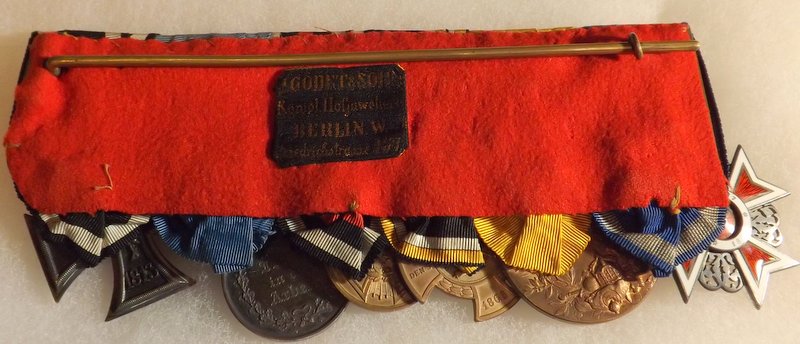
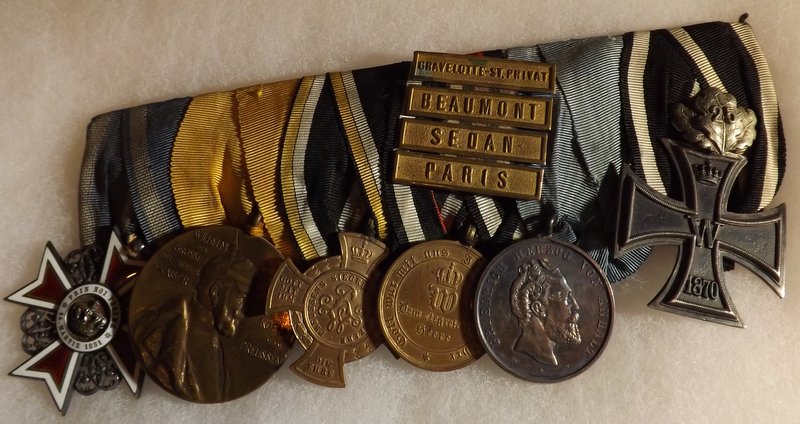 0
0 -
-
A very nice Godet frack with all three Hanseatic crosses. This one has the small aluminum tailor label.
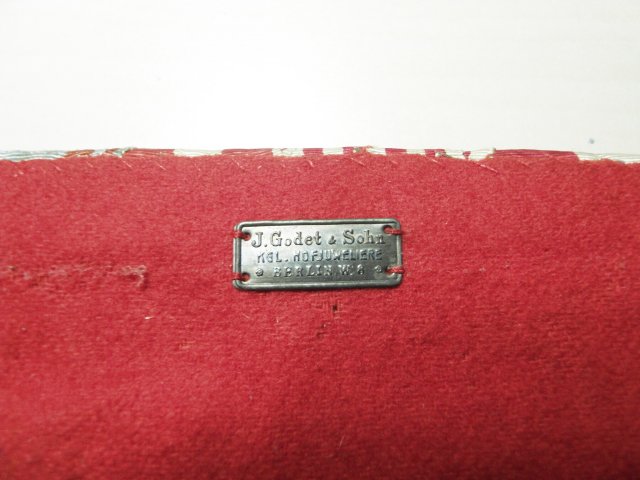
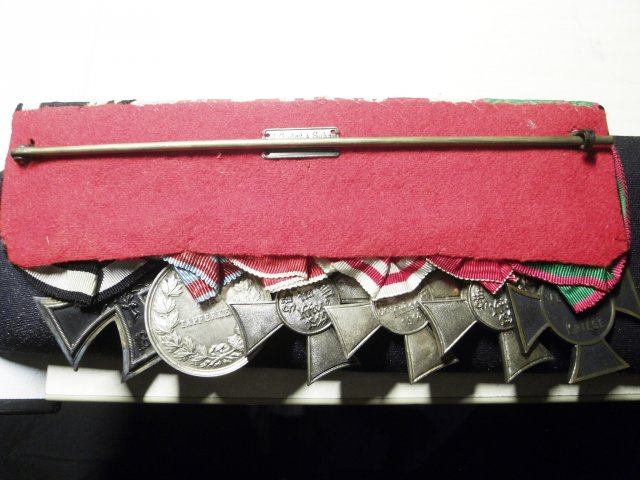
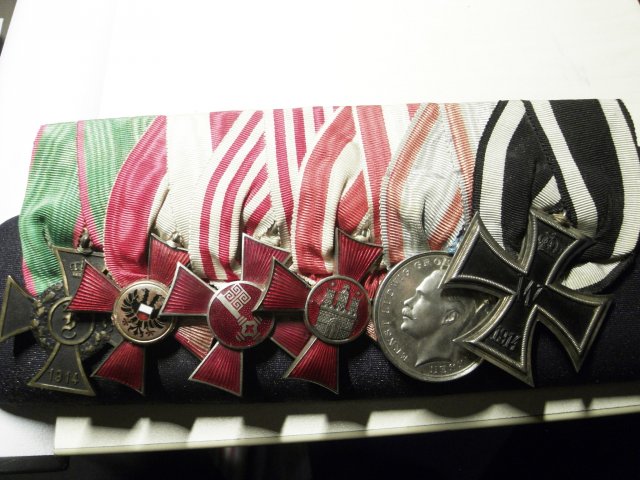 0
0 -
This is an amazing and most informative thread! Thank you Andreas!!!
0 -
A nice officer's frack.!
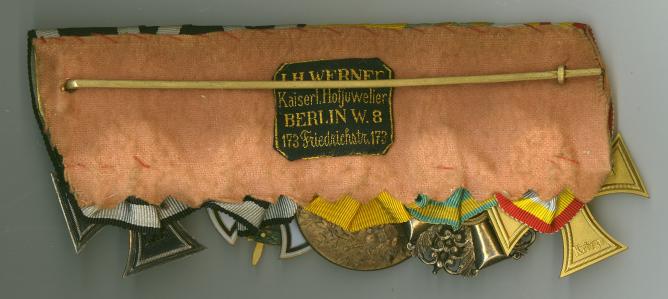
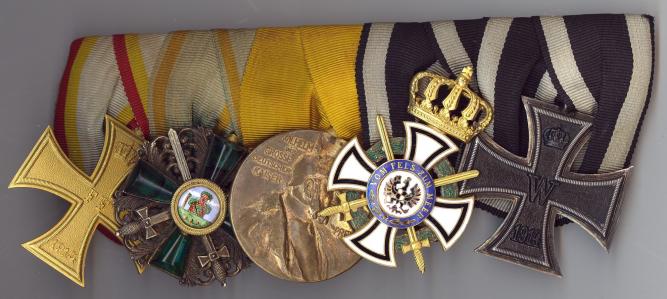 0
0 -
Hello azyeoman,
the MVK is a post-war variant like this example from the manufacturer Steinhauer & Lück.
Can you showme the ringholder of the MVK on the bar in posting #206
The cross looks very golden,but it is a third class, which was colured copper.
Regards Andreas
Thanks Andreas,
I would dearly love to, but it's on so tightly that I can't look at it without damaging the ribbon. : (
I have to say though, that #206 really appears gold colored.
All the best,
John
0 -
High profile battlefields such as Rorke's Drift and Isandlwana are preserved and there is a small 'battlefield tourism' industry in South Africa, mainly for visitors from Britain. The situation is very different for less famous battlefield sites and memorials, and neglect and vandalism are common. The future of anything to do with the Colonial era is bleak.
Regards
Brett
I'm sorry to hear that. I will try to post photos of other lesser known sites in AZ over the coming months. There are quite a few sites to see: e.g., Ft. Whipple in Prescott, Ft. Lowell in Tucson, Ft. Apache and Camp Verde. They all have original buildings and there are decent museums at Lowell and Verde. Whipple is still a VA Hospital!!! I also forgot Ft. Huachuca which has a couple of great museums and officer housing and barracks surrounding the parade ground is till used. It's a great place to visit and the cemetery there as the one in Prescott are most interesting. Of course there are graves from troopers to RAF pilots scattered around AZ. If you ever make it to Huachuca, the Officer's Club is a great place to eat and is open to the public too. I'll see about getting photos.
 0
0 -
Hi Ed,
Thanks for this; too bad it's not more detailed. Perhaps there would be more in the regimental history if there is one. I'll look into it.
 0
0 -
Hi Andreas,
Thank you for the info and the site too. : )
 0
0 -
I really like the Saxon medal; very nice bar!
0 -
Beautiful bar whatever the reasons. Thanks for sharing. I like the TWM clasp very much!
 0
0 -
An exceptionally fine contemporary oil on board portait of a young German soldier in WWI.
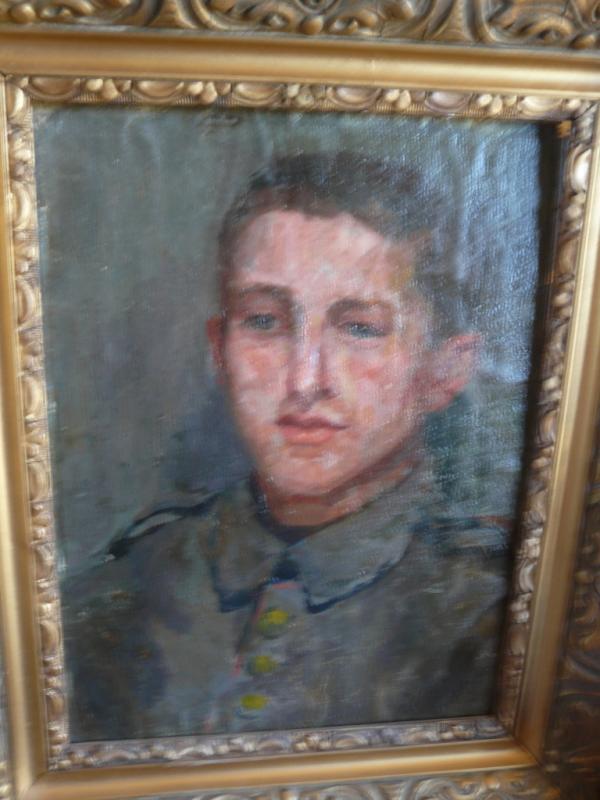 0
0 -
A very nicely done oil on board portrait of a German soldier in Paris. Signed and with information on reverse, "Jetot Andre" / "21 Rue Sainte Crois de la Bretonnerie" / "Paris IV"
There was an Andre Jetot who made a series of lithographs of Stalag IIID and this Jetot may indeed be the same man. If so, then there is a lot more behind this painting than meets the eye.
Below the artist signature in the lower right-hand corner (A Jetot) "Schrecfelde 25641" is painted in red. I presume this is the surname and number of the man in the portait and that he commissioned it or sat for it while stationed there or on leave. It is very well painted and Jetot was a good portrait artist.
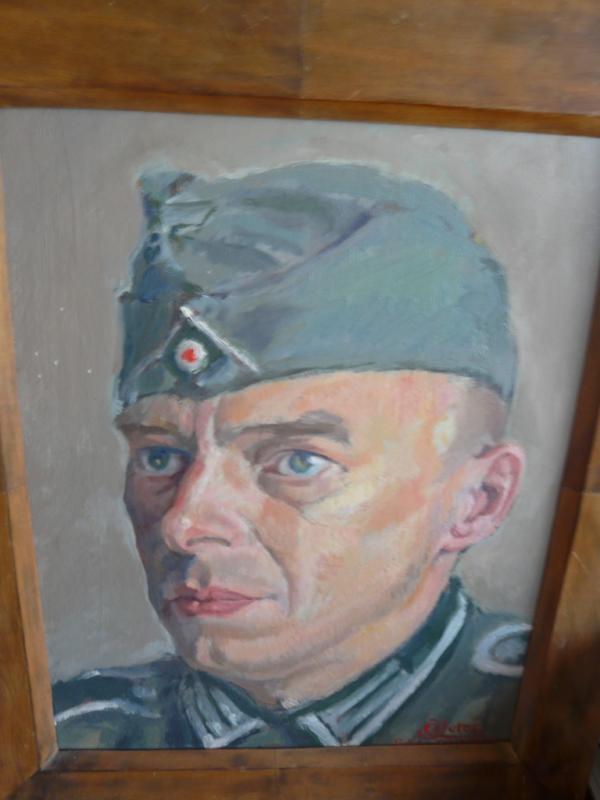 0
0 -
A small contemporary and exceptinally well drawn pencil portrait dated 1942. Very nice insignia on the hat and with the marksman's lanyard and a ribbon with crossed swords.
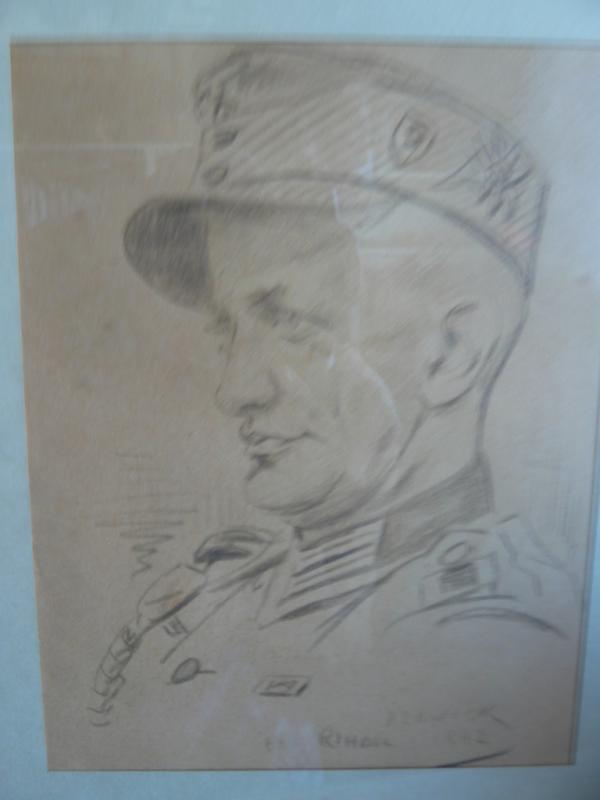 0
0 -
Here is a contemporary WWI oil on board portrait of a young German soldier. The way it's painted brings to mind that he may not have survived the war and this was commissioned by his parents.
 0
0 -
Mauser 1942 PO8 with holster.
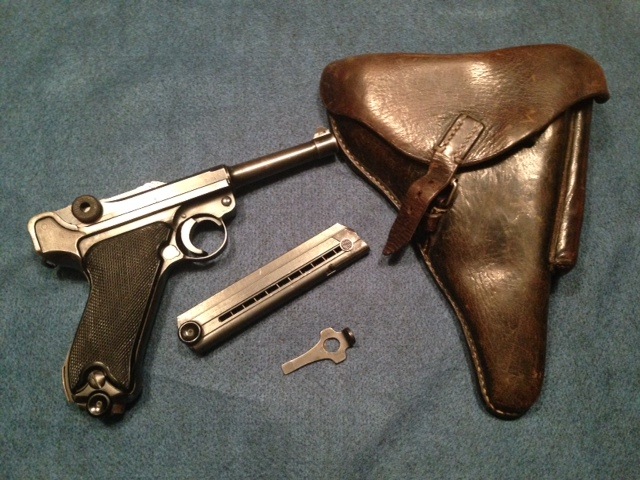

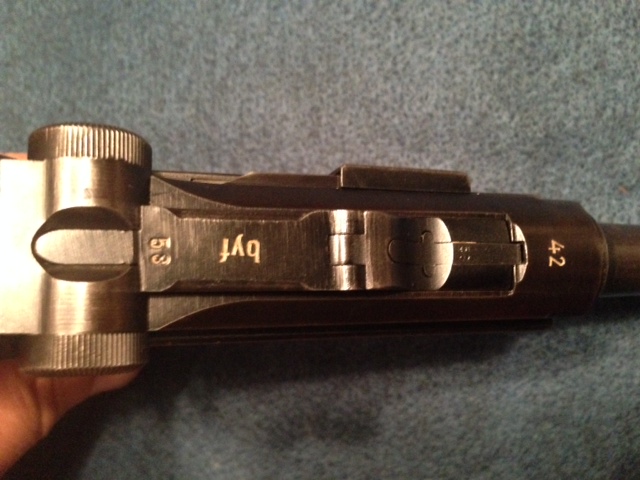 0
0 -
Another Legion Condor item. An award certificate for a Spanish Cross with swords in silver of which there were 8,304 total awarded.
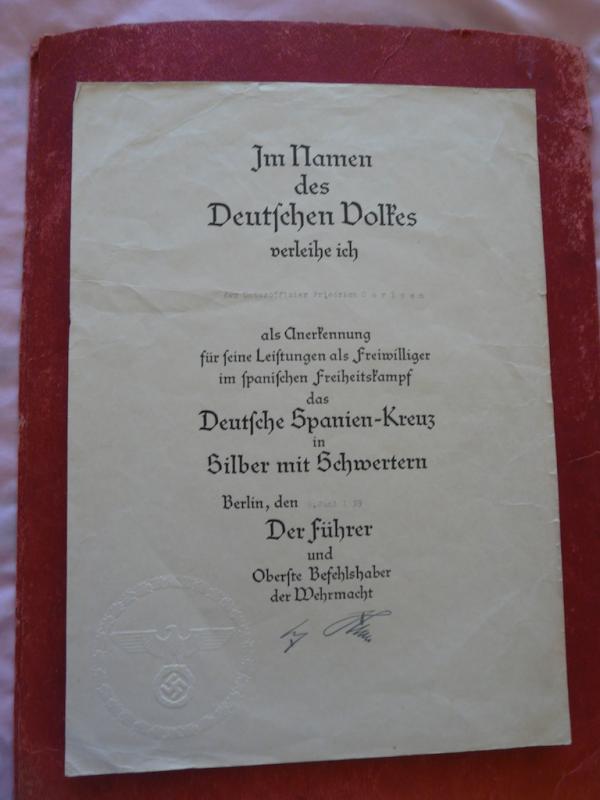 0
0



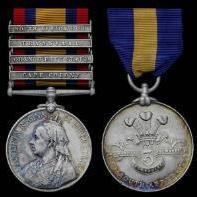
swordmanship prof badge
in Japan
Posted
Nice photo! It is unusual to see this badge worn. Thanks.